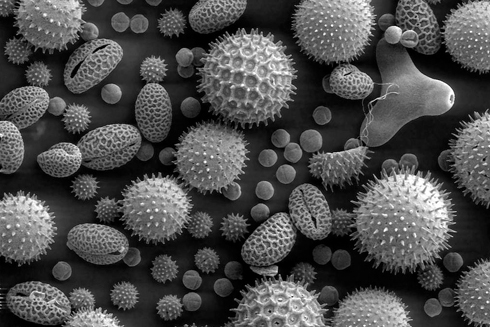<< Back to Blogs

Allergy-proof Your Home
Posted April 06, 2016
If you have hay fever or allergic asthma, take a few steps to reduce allergens in your home. Some steps to reduce indoor allergens are complicated and time-consuming, but there are some easy things you can do that may help. Some steps may be more effective than others, depending on what particular allergy or allergies you have.
Bedroom
- Bed and bedding - Encase pillows, mattresses and box springs in dust-mite-proof covers. Wash sheets, pillowcases and blankets at least once a week in water heated to at least 130 F (54 C). Remove, wash or cover comforters. Replace wool or feathered bedding with synthetic materials.
- Flooring - Remove carpeting and use hardwood or linoleum flooring or washable area rugs. If that isn't an option, use low-pile instead of high-pile carpeting and vacuum weekly with a vacuum cleaner that has a small-particle or high-efficiency particulate air (HEPA) filter. Shampoo the carpet frequently.
- Curtains and blinds - Use washable curtains made of plain cotton or synthetic fabric. Replace horizontal blinds with washable roller-type shades.
- Windows - Close windows and rely on air conditioning during pollen season. Clean mold and condensation from window frames and sills. Use double-paned windows if you live in a cold climate.
- Furnishings - Choose easy-to-clean chairs, dressers and nightstands made of leather, wood, metal or plastic. Avoid upholstered furniture.
- Clutter - Remove items that collect dust, such as knickknacks, tabletop ornaments, books and magazines. Store children's toys, games and stuffed animals in plastic bins.
- Pets - If you can't find a new home for your dog or cat, at least keep animals out of the bedroom. Bathing pets at least once a week may reduce the amount of allergen in the dander they shed.
- Air filtration. Choose an air filter that has a small-particle or HEPA filter. Try adjusting your air filter so that it directs clean air toward your head when you sleep.
Living room
- Flooring - Remove carpeting and use hardwood or linoleum flooring or washable area rugs. If that isn't an option, use low-pile instead of high-pile carpeting and vacuum weekly with a vacuum cleaner that has a small-particle or high-efficiency particulate air (HEPA) filter. Wash area rugs and floor mats weekly, and shampoo wall-to-wall carpets periodically.
- Furniture - Consider replacing upholstered sofas and chairs with furniture made of leather, wood, metal or plastic.
- Curtains and blinds. Use washable curtains made of plain cotton or synthetic fabric. Replace horizontal blinds with washable roller-type shades.
- Windows - Close windows and rely on air conditioning during pollen season. Clean mold and condensation from window frames and sills. Use double-paned windows if you live in a cold climate.
- Plants - Find a new home for potted plants or spread aquarium gravel over the dirt to help contain mold.
- Pets - If you can't find a new home for your dog or cat, consider keeping it outside if weather permits.
- Fireplaces - Avoid use of wood-burning fireplaces or stoves because smoke and gases can worsen respiratory allergies. Most natural gas fireplaces won't cause this problem.
Kitchen
- Stove - Install and use a vented exhaust fan to remove cooking fumes and reduce moisture. Most stove-top hoods simply filter cooking particulates without venting outside.
- Sink - Wash dishes daily. Scrub the sink and faucets to remove mold and food debris.
- Refrigerator - Wipe up excessive moisture to avoid mold growth. Discard moldy or out-of-date food. Regularly empty and clean dripping pan and clean or replace moldy rubber seals around doors.
- Cabinets and counters - Clean cabinets and countertops with detergent and water. Check under sink cabinets for plumbing leaks. Store food including pet food in sealed containers.
- Food waste - Place garbage in a can with an insect-proof lid and empty trash daily. Keeping the kitchen free of food crumbs will help reduce the chance you will have rodents or cockroaches.

